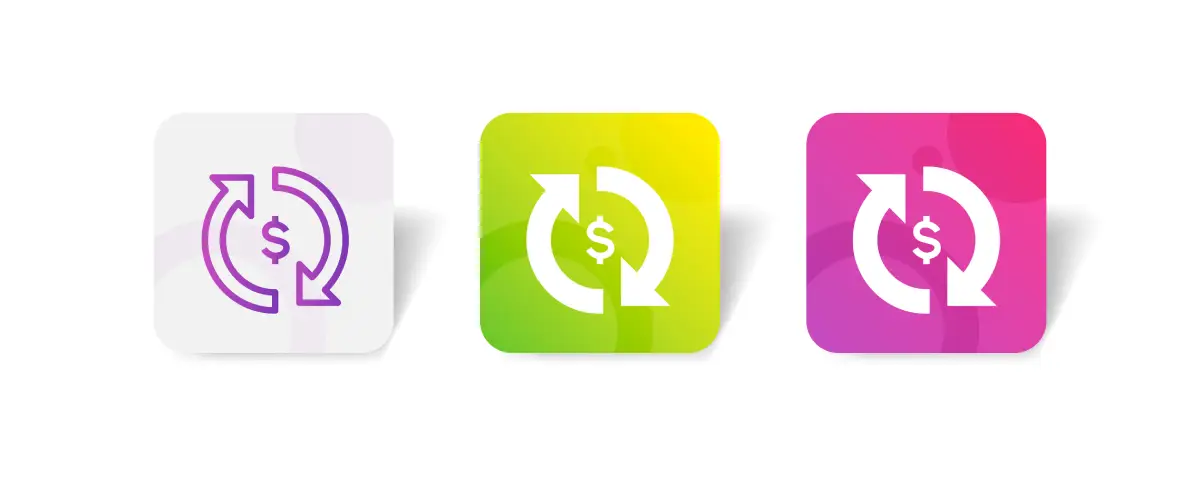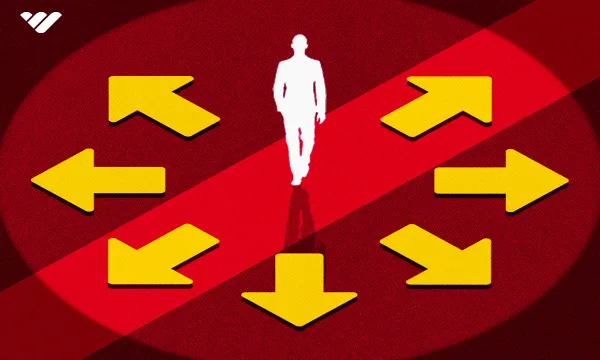Nobody likes bills, and yet modern consumers seem to sign up for all sorts of products and services that chip away at their monthly budget. Companies too seem all too happy to pay for various software and services using recurring payment rather than splurging on a single lump sum buy. What gives?
In this article, we’re going to look at recurring revenue, and how (and why!) it’s earning so many converts among both traditional and digital businesses. Even more importantly, we’ll look at 7 key models of recurring revenue, and explain how you can deploy them in your venture and as well as optimize them to boost your monthly top line.
What is Recurring Revenue?
Recurring revenue is the amount of a company’s revenue that they expect or predict will continue into the future via stable, regular transactions. The stability, predictability, and sustainability of this revenue and the fact that a company can be relatively certain about receiving it can make it desirable over one-off sales and might explain why companies have increasingly been gravitating to this model in recent years.
It’s important to differentiate true recurring revenue from regular purchases, here. A lot of consumers get into the habit of making regular purchases with a certain level of predictability, such as a weekly run to a supermarket for groceries or to the gas station to top up their car. Even though you might decide to make the same sort of purchase from the same supermarket or gas station every single week, it’s not perfect—you may be sick one week, out of town, or just decide to go to another store or gas station.
On the other hand, think about something like your subscription to a streaming service like Netflix or Hulu. If you don’t have one, what about Amazon Prime? Are you paying for a little blue checkmark on Twitter? A YouTube Premium account? Your favorite content creator’s membership platform, whether that’s Patreon or Whop?
When you sign up for most of these, you’ll have to provide payment details, and payments will be made automatically until your credit card expires or you terminate the subscription or membership. That’s how recurring revenue usually works, and as far as the recipient is concerned, it’s reliable and predictable.

What are the Benefits of Recurring Revenue?✅
When looking at the benefits as well as the disadvantages of recurring revenue, it’s important not just to view it from the lens of the business, but also from that of the consumer. Forward-thinking companies who do this are the ones who reap the most success because they’ve realized that consumers, or end customers, have become their most scarce and valuable resource.
This might be an odd concept if you subscribe to the more traditional theories of economics and business. However, it’s apparent that the advance of technology has led to the global economy shifting further and further toward digital goods and services. There aren’t any raw materials here, at least not in the classical sense—a physical good is made out of physical materials, but a digital product needs none of that.
As such, the key constraint when it comes to the basic economics of your business isn’t on the supply side since there aren’t any raw material constraints—it’s demand, and how many consumers are interested and willing to pay for your digital products or services. This is exacerbated by the sheer variety of choice consumers have, with lots of other options on the market.
On the surface of it, this might sound like the business environment is even more challenging than ever, as an entrepreneur. The truth is that there’s always success to be had if you’re able to provide an outstanding value proposition.
Recurring revenue then allows you to take your business to the next level fast. By recognizing the value of the customer, it should follow that customer retention and developing customer loyalty is paramount. Unlike with one-time purchases, though, customer retention pays off very quickly when it comes to recurring revenue—if you’re a car company, a brand-loyal customer still only buys a car every few years at best. With recurring revenue, it’s coming in like clockwork every month.
The regularity and predictability of this revenue gives you a lot of security in business that you wouldn’t otherwise have. It also underlines the concept of customer lifetime value—your customer is paying every month, so you want to keep them subscribed for as long as possible. This means evolving as a business, staying ahead of the competition, and continuing to recognize the value of the customer.
In summary, recurring revenue gives you:
- Predictable, sustainable cash flow
You are billing customers at regular monthly, quarterly, or annual intervals which lets you forecast your financials with far greater accuracy than you’d be able to in a traditional revenue model that relies on purchases. - Flexible payment models
As we’ll go into later, you can design your recurring revenue in various ways to suit both your business and customers. - Continuous value
More a benefit to the customer but also good in terms of giving you a competitive advantage, recurring revenue means delivering consistent value. Only companies who can do this survive. - Increased retention
Recurring revenue models remind you to focus on what’s truly important in business—the customer. If they aren’t happy or aren’t getting the value they feel that they deserve, they’ll churn out. Many companies and entrepreneurs forget this, so you can take advantage by being customer-focused. - Automated payments
No customer likes signing a check or entering their card details—just ask any online store how many customers abandon the checkout process! Recurring revenue reduces this element of friction by only asking customers to sign up once, meaning that they’ll only have to act to cancel. You’d much rather have this than make them act in order to pay constantly.
Disadvantages of Recurring Revenue❌
Despite the advantages of recurring revenue to both customers and businesses, it does have certain down-sides or pitfalls. The loss of customers, or churn, is a big one for businesses—while there are measures you can take to minimize churn, it’s inevitable that you do lose customers for whatever reason.
With recurring revenue models, the cost of acquiring customers can be fairly significant, given that you need to spend on various marketing activities to create an effective sales funnel. Recurring revenue models tend not to stress a customer’s wallet too much lest they be prohibitive, which in turn means that you’ll need a few billing periods to recoup the acquisition cost per customer. If they churn out before getting to that point, you’re making a loss.
One-time payment models are subject to this too, but it isn’t as hard to manage. You’re generally trying to factor your cost of acquisition into the pricing of a product, and as long as you’re able to meet your sales projections, you’re doing okay. With recurring revenue you not only have to successfully acquire customers, you need to retain them for a certain amount of time.
From a consumer perspective, recurring revenue can also pose problems in certain situations. In countries without extremely extensive consumer protection measures and strict controls, a lot of companies drive up the friction to exit a recurring payment service. In some cases they’re able to do this by trying to impose contractual terms and penalties, whether legitimate or not. In others, they try to make it next to impossible by mapping the exit to as difficult and counterintuitive a path as possible.
Monopolistic behavior is also a growing concern especially among companies who have been able to develop advantages in the areas of reach or exclusivity. Certain content deliverers for instance were able to establish themselves by undercutting traditional services, and are now able to take advantage of the lack of competition by exploiting consumers willing to suffer in order to continue consuming content.
7 Types of Recurring Revenue Models🔁
#1. Subscription

Subscriptions are the first model that you might think of when it comes to recurring revenue, and the two terms are almost synonymous with each other. It originates with print media, and people have been paying subscriptions to newspapers, magazines, and even comic books for decades. Much of these media have gone digital, but the subscription model has expanded far and beyond into various other industries.
A subscription model has a customer paying a fixed amount on a recurring basis to receive a product or service. The delivery method may be physical or digital, and the service is only canceled when the customer terminates their subscription or their payment method starts to fail—such as when a credit card expires and the customer doesn’t update their payment information with the provider.
Today, you’ll see this subscription model being used very commonly in the entertainment industry, with the likes of Netflix offering TV and movies on a subscription basis and Spotify doing the same thing with your favorite tunes.
#2. Membership

Membership is another recurring revenue model that has evolved from the analog domain. On the one hand, there are membership for analog clubs and communities such as gyms, health clubs, professional associations, and so on, but today it’d be a surprise if any top content creator didn’t also have a membership option.
With membership, customers usually pay recurring fees to receive both extra content from that creator as well as the community aspect of connecting with people who have something in common. That community element is key to the membership model, and while it can be worth paying for on its own (with a professional association, for example) it tends to come with other perks.
👉If you want to learn how to create your own membership community or gate channels on your Discord servers for members at different tiers in your own program, check out Whop! It’ll only take you a few clicks to get started.
#3. Per-user

Sometimes, you might be looking at firms (often referred to as logos in this context) as your customers rather than individuals. In these situations it can make sense to structure your recurring revenue model in a way that makes the most sense, and per-user payment often fits the bill.
Quite simply, you charge your corporate client a fee based on how many of their employees are going to be using your product. As you might imagine, this sort of plan is most common in SaaS, where you might be selling access to an enterprise software that a number of employees of a company may want to use.
The advantage with per-user billing lies in the fact that you’re not restricting companies of a certain size from using your software, nor are you losing out on the potential numbers from a big client.
There are other alternatives to this as well, such as the usage model where users are billed based on how much they use your software, or pay-per-use where you’re billing exactly based on number of uses rather than requiring a company to pay for a set number of users irrespective of whether they use the product or not. The license model might also fall under this umbrella.
#4. Tiered Billing

Just like how per-user, pay-per-use, and usage-based billing give you different ways to bill corporate or organizational clients, tiered billing is a fantastic way for you to cater to different types or personas of customer.
The principle here is that you have a service with a wide range of features but understand that many customers only want a small or even specific subset of features. Furthermore, asking every customer to pay for the full package, while desirable, may just simply be too much for most customers and therefore lock many out.
The Sky television network, for example, has all sorts of programming on offer but they offer tiers where you only have access to certain programs. You can, for instance, sign up for Sky Sports and pay far less than you would for the entire TV and entertainment package.
This is a model that you can adapt quite easily irrespective of what business you’re doing. Teaching trading courses? Put access to your on-demand stuff on one tier, and give people increased access, live streams, or other benefits on a higher tier. If this sounds like it’ll be complicated to execute, think again—Whop can configure this for you in a flash.
#5. Consumables

While recurring revenue tends to be used in service-based e-commerce businesses, it’s important to note that consumables were where it started (think monthly or weekly issues of magazines or comics, and daily newspapers).
This is still a thing, and as long as you can keep up with the schedule, it’s very possible to set up a regular consumable that’s paid for using recurring billing. The onus is on you to make sure that you can achieve a certain level of consistent quality, but then that’s a given irrespective of your business.
In fact, a lot of businesses have shown considerable innovation in adopting this model—especially in food and beverage, where you can take delivery of anything from a daily microwave meal to a weekly supply of wine or cheese via recurring payments.
#6. Hard Contract

Hard contracts are a traditional model that you are probably already engaging with even if you haven’t quite realized that it’s a bona fide recurring revenue model. Generally, they look to tie a consumer down for a longer period of time, such as a year or two, and then set up payments on a recurring basis.
You might be used to this from any of your utilities providers or your mobile phone company. They’ll often try and entice you with various incentives, and a lot of telecommunications companies throw a high-end smartphone into the deal. The catch, however, is that it tends to be fairly tricky to get out of the contract.
From a business perspective, this model can help with retention since it doesn’t allow the customer to back out of the contract easily. Granted, this is artificial retention, but there’s no reason you can’t provide fantastic service and get the customer to extend or re-sign! It also allows you to plan out your finances effectively.
#7. Lifetime access/One-time purchase

While this is contrary to the very definition of recurring revenue, it’s a very useful option for a lot of businesses to offer and could be worth considering. How it works is simple—a customer makes a single lump sum payment, then gets access to the product or service in perpetuity.
You might want to offer this in concert with other models because it gives you a chance to encapsulate their LTV, and give customers the option of paying what you think they’ll be worth to you over time. There’s no guarantee that they would stick around for that long, so if they want the option of paying their LTV (or more) in one go, why not?
It makes sense from a cash flow perspective, but be very careful of what promises you make—you might end up with a big hit to your brand if you sell lifetime access and then fail to make good on that promise.
How to Calculate Recurring Revenue🔢
As we've mentioned, recurring revenue means predictable income that arrives in a regular fashion. This regularity refers to your billing period, which could be annual but most companies using recurring revenue tend to use a monthly model.
For that reason, one of the terms you’ll hear most when discussing recurring revenue is MRR. It stands for Monthly Recurring Revenue, and sums up the monthly value of all active subscriptions you have. If you have non-monthly subscriptions, you can simply divide them by the number of months they go for in order to plug them into your MRR figure.
Once you’ve sorted out your MRR, you can simply annualize it to get your ARR or Annual Recurring Revenue. This essentially corresponds to your yearly top line, and can be used with a certain degree of accuracy in all of your financial planning and forecasting. It goes a lot further, in fact, so if you want to know all about the power of ARR, check out this guide! You can treat long term contracts the same way for ARR as you would multi-month subscriptions for MRR—a five year $5 million contract would give a $1 million ARR.
Other Important Recurring Revenue Metrics
Data and analytics are essential if you want to run an efficient business and make decisions based on tangible evidence. MRR and ARR are a fantastic start in this regard since they cover the basic contributions to your top line, but here are some other KPIs or metrics you should get comfortable with.
Gross Retention Rate (GRR)
Sometimes simply referred to as Gross Retention, this metric looks at the percentage of existing revenue you’re able to retain over a given period, and doesn’t take into account any sort of cross-sells or upsells you’re able to manage with your existing customer base. As such, this figure isolates the amount of existing revenue you’re able to retain.
Example: If your recurring revenue is $1 million but you lose $100k of that next month due to those customers churning or not renewing, your GRR is 90%.
Net Revenue Retention (NRR)
Net Revenue Retention, or just Net Retention, is similar to GRR but includes the expansion revenue from things like cross-sell and upsell. This gives you a more accurate look at your revenue situation, but that’s not to say that it’s any more (or less) valuable than GRR as a KPI for your business.
Example: As in the above example, if recurring revenue is $1 million and you lose $100k due to churn, but also gain $400k in upsell and cross-sell, your NRR is 130%.
Customer Acquisition Cost (CAC)
Your Customer Acquisition Cost, often called Cost Per Acquisition, gives you an indication of how much it costs, on average, to acquire a single customer. You can then weigh this up against the revenue you earn per customer and see how long it takes to recoup the cost of acquisition, which is a challenge that recurring revenue businesses face.
Example: If your total cost of sales and marketing, including ad expenses and commissions, is $100k within a given time period and you acquired 5,000 customers, your CAC is $20. If you’re charging customers a recurring $5 per month, you need to retain them for a minimum of 4 months in order to start making a profit.
Customer Lifetime Value (CLV or LTV)
Customer Lifetime Value is one of the most critical metrics in recurring revenue business since, as we explained above, the customer is your most precious and scarce resource. Keeping customers happy and retaining them for as long as possible means maximizing their lifetime value to you as a business, since they’re paying you every month that they’re staying with your service, membership, or business.
Example: If you charge a recurring $5 a month as above and customers tend to stay with you for an average of 12 months, your LTV is $60.
Magic Number and CAC:LTV Ratio
These are two important recurring revenue metrics derived from customer lifetime value and customer acquisition cost. The magic number for your business is calculated by dividing LTV by CAC, and it tells you how many times over your customers are paying off the amount you spend acquiring them. You can look at it like an ROI on your sales and marketing spend.
Example: Following on with the two above examples where CAC is $20 and LTV is $60, your magic number is 3. This means that for every dollar spent on acquisition, you’re earning $3 back.
The CAC:LTV ratio is actually just the inverse of the magic number, but it gives a fresh new perspective by showing you the cost of acquiring a customer as a percentage of how much revenue they bring in.
Example: With CAC of $20 and LTV of $60, your CAC:LTV ratio works out to ⅓ or 33%. The less a customer costs as a percentage of how much revenue they bring in over their lifetime, the better.
Churn Rate
Churn rate looks at the amount of customers you lose over a given period, but it can be broken down into active churn and passive churn—active churn being customers who actively terminate their subscriptions or contracts while passive churn refers to payment failures for reasons such as expiring credit cards. To calculate it, take the percentage of customers you lose during a billion period compared to the number of customers you started the same period with.
Example: If you had 200k customers at the beginning of the period but 10,000 either canceled their subs or failed to pay by the end of the month, your churn rate is 5%. You can also express this the other way and say your retention rate is 95%.
How to Grow Your Recurring Revenue💵
Growth is a big word when it comes to companies that use recurring revenue models, since several industries where they’re most common tend to experience extremely quick growth. SaaS, for example, is famous for both its use of the subscription model and exponential growth rates, so much so that following traditional growth benchmarks tends to see firms being left in the dust.
That being said, it’s far too easy to overemphasize growth and lose sight of what’s truly important—the customer. It’s important to have a healthy growth trajectory, but as we’ve shown with some of our metrics above, customer acquisition doesn’t always equate directly to profit.
Many firms find out far too late that it can take a few months for a customer to pay back the expense incurred in acquiring them, so high acquisition figures are worthless if churn rate is right up there too. Other firms burn through significant numbers of customers, saying that they’ll focus on retention later—then find out that there aren’t actually an endless pool of customers waiting for them, and as the available market dwindles, acquisition gets even more expensive.
Then there’s the question of whether to focus on certain metrics, such as the GRR versus NRR debate. Ultimately, though, the answer likely comes down to your vision, priorities, and what sort of balance you can achieve between acquiring customers, retaining them as long as possible, and also growing your revenue from existing, retained customers through cross-sells and upsells.
How on earth can you juggle all of this given today’s fast-moving and increasingly complex e-commerce climate? Glad you asked!
Maximize your Recurring Revenue with Whop!💰
Commerce always boils down to value, and as an entrepreneur it’s a reasonable assumption that customers who see value in your product or service will always be willing to pay for it. The right way to go is perfecting your product, then bringing new products or services into the pipeline to delight those customers even more. How can you focus on this, when it’s all too easy to get mired in a maze of administration, customer service, website design, troubleshooting, and even dealing with disputes?
Luckily, the answer is rather simple! A partner like Whop can take all of this off your hands, letting you devote your time and energy to what’s truly important. Whether it’s the management of your online store or handling access to your Discord community, implementing your payment tiers or subscriptions, completely taking over payment processing, or just dealing with any customer issues promptly and professionally—you need a platform like Whop in your corner.
👉 If you want to get the most out of your recurring revenue model, whether it’s subscription-based SaaS, a tiered membership plan for your creator community, or any digital service, Whop is the place for you. Get in touch with the team, or just visit the site and sign up now!





